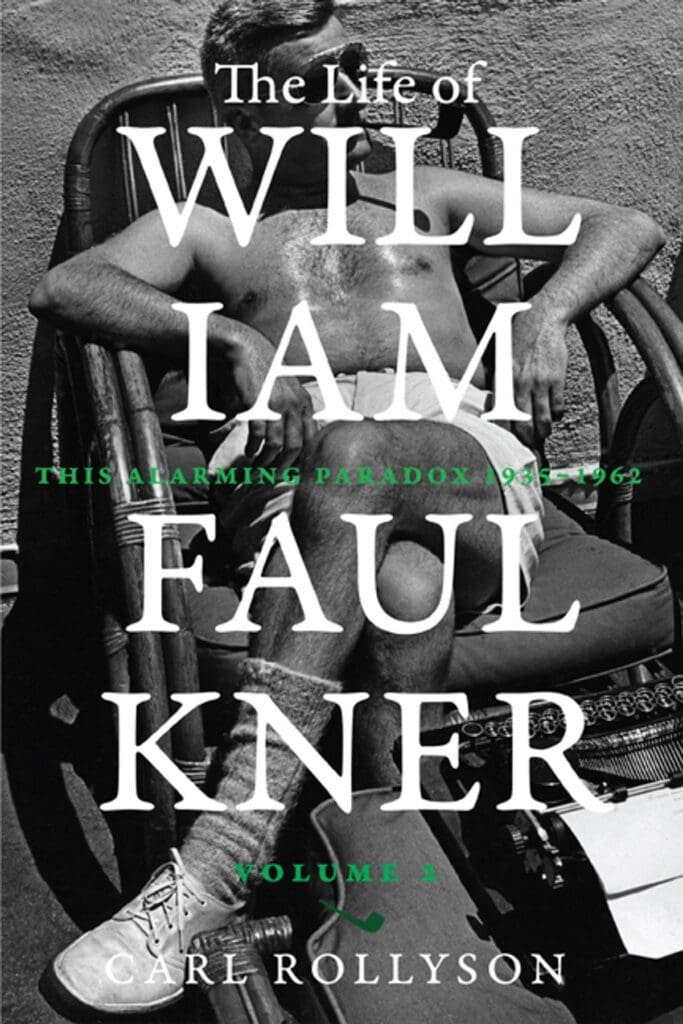Entrenched in Gothic drama and the history of the American South, William Faulkner’s writing remain a landmark in Modernist fiction. Pulitzer and Nobel prize winner, Faulkner is undeniably a giant of twentieth century literature. However, less well known, perhaps, is the life he led, the conditions he struggled with, and the contradictions of his own self-perception.
Despite Faulkner’s aversion to biographies, in The Life of William Faulkner: This Alarming Paradox, 1935–1962 (Volume 2), (622 pages; University of Virginia Press), Carl Rollyson, seasoned biographer and Professor Emeritus at The City University of New York, produces a vivid sequel to the first volume of his endeavor. Rollyson’s book stands as a hallmark of Faulkner studies, and his work delineates the life of the celebrated author with exhaustive detail. In this book, Rollyson pieces together the arresting tale of a literary genius who sought “to endure and prevail.”
Beginning in the early 1930s, the biography presents Faulkner after the publication of his novels The Sound and the Fury and Light in August, both of which brought him success early in his career. These successes also brought Faulkner a sense of self-aggrandizement—but as much as he may have seen himself as above everyday concerns, he was forced to deal with debt, guilt, and disarray within his family after the death of his brother, for which “Faulkner blamed himself.”
Shouldering the heavy weight of this responsibility, Faulkner left for Hollywood to become a screenwriter, working with the likes of director Howard Hawks and leading man Humphrey Bogart on 1946’s The Big Sleep, and traveled back and forth between Southern California and his home in Mississippi. This nomadism would persist for years and become one of the central themes of both Faulkner’s life and much of his later work. As an outsider in the world of Hollywood, Faulkner would have to contend with the disparities between his Southern roots and his newfound surroundings, each having their benefits and drawbacks. But even with the slow disintegration of his marriage, relationships with his various mistresses, and bouts with alcoholism, Faulkner still managed to produce some of his most enduring work, with Absalom Absalom! helping him to win the Nobel Prize for Literature in 1949.
As Rollyson delves deeper and deeper into the life and interiority of William Faulkner, he begins to highlight the parallels between Faulkner’s work and his life experiences. It becomes clear that Faulkner inserted both himself and the people around him into the characters and stories he weaved; in effect, Faulkner’s art imitated his life. Spending much of the biography focusing on Faulkner’s books and films, Rollyson offers deep analyses of Faulkner’s writing, contextualizing the work, and drawing undeniable connections between Faulkner’s experiences and the fiction he spawned.
The biography portrays a complex portrait of a struggling genius, stunning in the capacity of his mind and yet grappling with both his past and present. However, as detailed and thorough as the biography is, it can at times prove tedious. While Faulkner’s life and work are inextricable from each other, Rollyson’s in-depth analysis of Faulkner’s works can sometimes feel like a departure from the biography itself. As such, this is not a biography for readers with a casual interest in Faulkner; rather, it is a biography for those already intimately familiar with much of his work.
Comprehensive, rich, and painstaking, The Life of William Faulkner: This Alarming Paradox, 1935–1962 is sure to endure as a thorough investigation into the life of one of the greatest literary minds of the 20th century.

